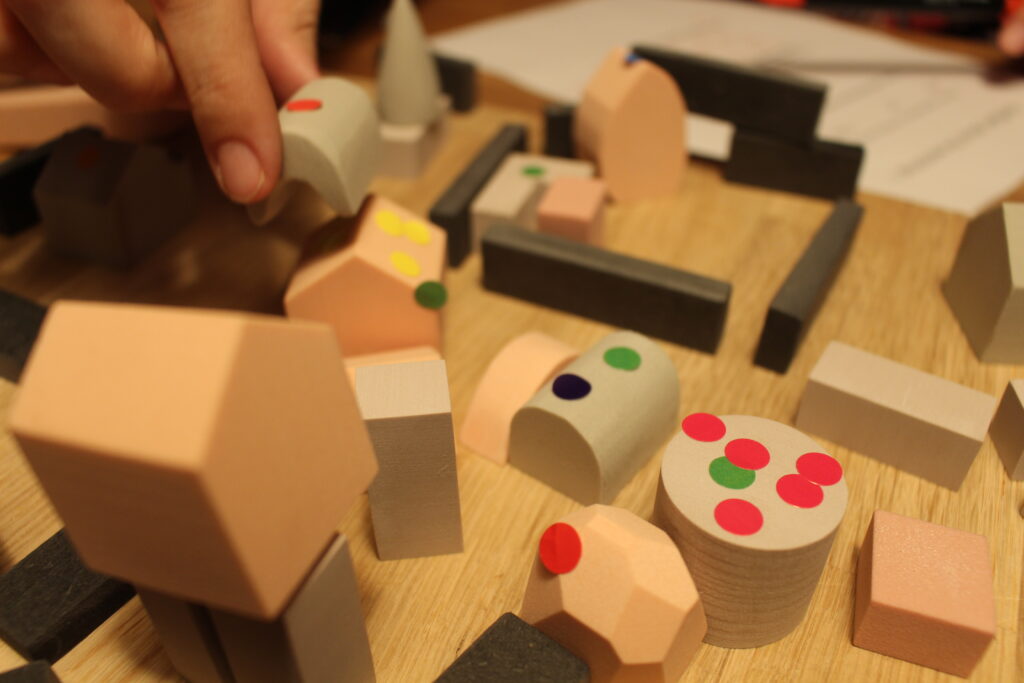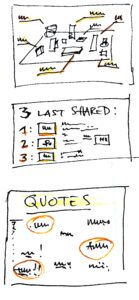2019
Co-design project
Relational Design course
Stakeholder
Anne-Marie Hansen
Team
Linea Bendtsen, Elizabeth Matkiewicz, Tirsa Rosalba Ramos-Pedersen, Jonas Stengel, Valentina Ustinova

This is a toolkit, consisting of a series of workshops, aimed to materialize dreams, visions, considerations, negotiations, and concerns about the relationships that might appear between people who share facilities and resources. With the question “How can we support different communities of people to envision, create and develop new forms of shared living that are both socially and environmentally sustainable?” the design team aimed to create a toolkit, which would help the target group to shape their shared living society by engaging in different activities and experiences.

“How can we support different communities of people to envision, create, and develop new forms of shared living that are both socially and environmentally sustainable?”
This case focuses on materializing dreams, visions, considerations, negotiations, and concerns about the intimate relationships that might appear between people who share facilities and resources.
Early exploration phases consisted of literature research, interviews, field research, and brainstorming. After the toolkit's prototype was created, the design team conducted a series of facilitated workshops. The results of these workshops proposed to include methods such as cultural probes, roleplay, scenarios, and workshops in the final version of the toolkit.
The design team conducted 2 Workshops to test the toolkit.
Workshop #1 was decided to be a pilot version, which lasted 1h and involved 10 students from different programs. I was taking pictures as documentation. There were 2 activities: 1st - a diagram with proposed and blank words for the participants to fill in answering the question "What would you be willing to share?"; 2nd - a board game with blocks to build envisioned community together within given categories: basics, eat, leisure, hygiene, produce, and extras.
However, it turned out that these activities did not document the discussions very well, so the design team added different questions and small questionnaires for the participants during iteration.
Workshop #2 consisted of 6 expat parents, who were acquainted with each other and met at the familiar setting for the workshop.
I was honoured to facilitate the workshop with great support from the team. The workshop consisted of the same 2 activities as before, yet, they included more rounds and tasks within the activities. For example, in the 1st activity, the participants were asked to reflect on what was easy or difficult to share; in the 2nd activity the participants were asked to add changes to the built community based on the situation on a card they picked as well as later mark the locations based on provided questions such as "Where would you like your community to gather?".
While the activities became better at documenting the workshop, they still did not show long-term changes in opinions and situations, so for the final toolkit, the design team decided to include cultural probes and a diary.
Taking into consideration all the feedback, the team decided that the toolkit should consist of a series of workshops with cultural probes in between, tackling Practicalities, Conflicts, and Emotions to different extend. The probes are not narrowed down, the team left this part open-minded mainly due to the time limitations of the project.
The first cultural probe (the ice breaker) would be sent in a package and consist of the consent form, a brief intro to the project, then the cultural probe activity.
The first workshop would look like activities in Workshop #2. However, after that workshop, each player would receive another probe (postcards), with the task of writing a short entry after each workshop in a diary and 2-sided feedback postcards with perforated sides: one to keep, one to send to facilitators.
The second workshop would consist of a role-playing activity, where each participant would get an opportunity to channel imagination and think outside the box while picking a card with a scenario and brainstorming how to build a community based on a given scenario. At the end of this workshop, the participants would receive a cultural probe as a follow-up exercise. This is also the point where they would be asked to turn everything in for the facilitators to analyze and draw conclusions.
After the last workshop, as an informative thank you souvenir, the participants would receive something like a small token in a form of a picture or a small wooden house or a booklet.

The team contributed with gathered knowledge about interactive workshops for the people interested in living in a commune with a shared space. We researched and came up with three different methods how to address Practicalities, Conflicts, and Emotions for the people interested in living in a commune, resulting in a tangible toolkit, consisting of series of workshops. Together we addressed the issue of how to document and preserve storytelling during the workshops as well as how to inspire people to reflect on their own experiences and inspire thinking outside the box. Despite us not co-designing with participants, the toolkit allows the participants to co-design, envision, and shape their future shared community. The design team tried to make the participants aware of the possibility to shape society by shaping experiences through a tangible toolkit.
Cover and Workshop #2 pictures: Valentina Ustinova